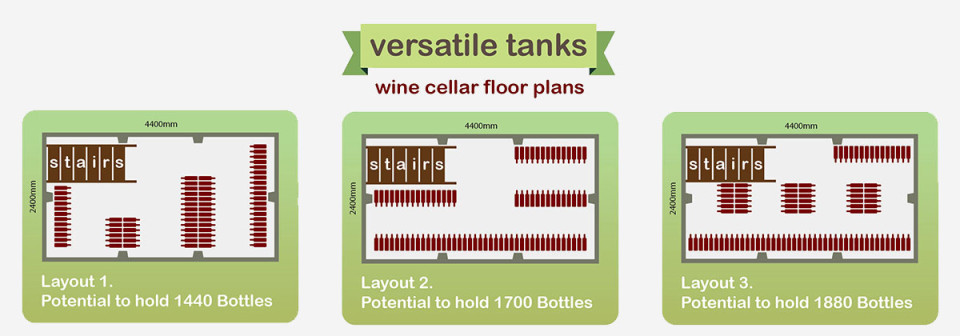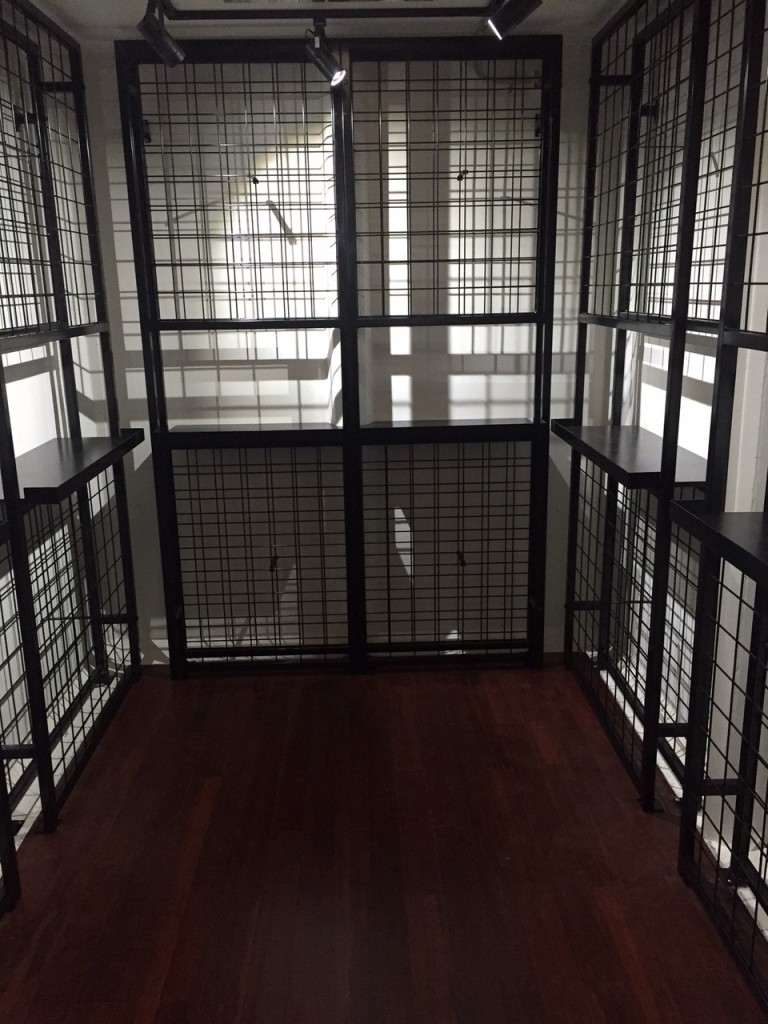Wine Cellar Designs & Floor Plans
 Having a wine cellar might sound like something that’s the sole province of the very rich and famous but your dream could be a little bit closer than you think.
Having a wine cellar might sound like something that’s the sole province of the very rich and famous but your dream could be a little bit closer than you think.
Readymade concrete wine cellars offer an easy and convenient solution to a lack of space, allowing you to tag a wine cellar onto your home, whether it’s underground or above.
The actual design of the wine cellar is absolutely vital to make sure you end up with the space you want, and one that’s suitable to keep your wine in the best possible condition.
Control the environment
If your wine collection is valuable and a prized possession, you’ll need to take some preventative steps to stop your expensive wine from turning into sour vinegar. Unfortunately if the storage conditions are not well balanced, that’s exactly what can happen and your entire investment will become worthless.
It’s therefore very important that you create the right design for your wine cellar for more than just cosmetic purposes.
Temperature is a major concern with other structures unable to offer the same controlled ambience that is possible to achieve with the help of your wine cellar. Wine that gets either too hot or too cold could seriously affect the quality.
In a country such as Australia, there can be real variations in the temperature from searing highs to freezing lows. The overall design of the wine cellar and the composition means that your wine will be protected no matter what’s going on outside, allowing you to keep the temperature between 5-18 degrees, which is the perfect range for wine.
Sunlight
It’s not just excessive heat and temperature extremes that can be damaging for the wine; sunlight can also be another problem for your precious collection.
Wine cellars are moulded and manufactured in one large continuous piece so there’s no risk of having joins and seams. There are also no windows either as the units are designed to be used underground.
Although it’s entirely possible to use these wine cellars in any way you choose, the original design was for underground use. With no windows necessary, this means that the wine cellar won’t let in any kind of sunlight.
UV light can prematurely age wine very rapidly, so if you’re not planning on submerging the wine cellar below the surface, you need to take into account the fact that no UV light will permeate into the unit.
Storage design
 The ready-made concrete cast designs are available in two sizes with both medium and large dimensions available.
The ready-made concrete cast designs are available in two sizes with both medium and large dimensions available.
Square and rectangular shapes mean that you can get the maximum available space for the minimum room, with no wasted corners.
However, although you might have a pre-determined size and shape, what you do with the interior of the wine cellar is entirely up to you.
Different layouts are possible, which provides the potential for very different interiors. If you’re using the cellar for wine, the size means there’s room for a vast number of bottles that can be stored horizontally. This is imperative in order for the wine to stay in optimum condition and to age well; lying horizontally allows the contents of the bottle to remain in physical contact with the cork at all times.
Of course, not everyone uses the wine cellar for storing wine. Its versatile composition means it’s just as suitable for other types of storage. If this is the case, the layout can be designed in order to meet the requirements of what’s being stored.
Location
When deciding on the design of your wine cellar, you could choose to have it either above ground or underground. Our wine cellars are primed perfectly for either position.
Underground does have a significant number of advantages such as being invisible and hidden from view.
One factor worth careful consideration is the proximity to traffic. Placing your wine cellar too close to passing traffic could cause a problem due to the vibrations. The same principle applies if there are lots of heavy machinery nearby. Placing your wine cellar underground should help to provide an element of protection to the bottles, and significantly reduce the risk of any possible vibration damage.
